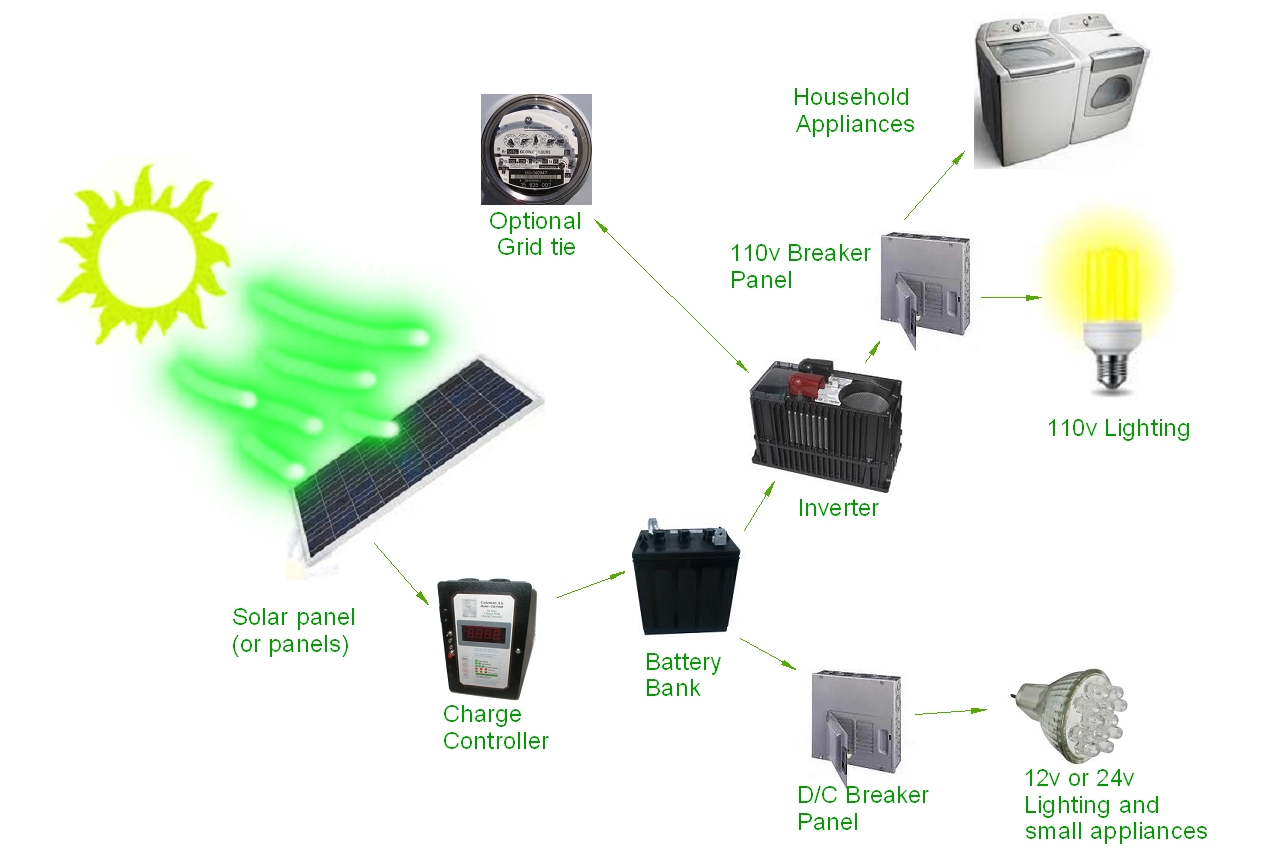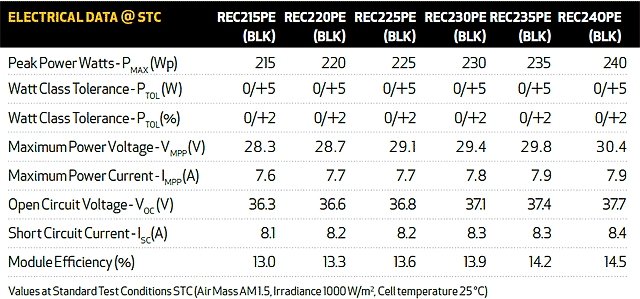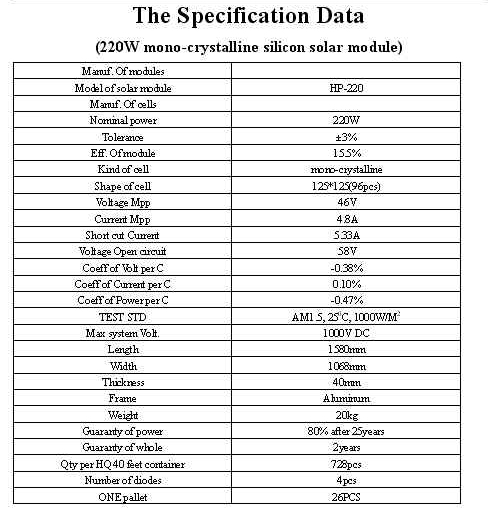Page 8

Wind/Solar
Hookup Basics and Beyond.
Page 8

The image above shows the typical routing of the energy in a alternate energy system.
This system uses a battery bank and inverter.
Our sun makes renewable green energy that is economically captured via solar panels.
This energy can be used directly by small D/C appliances; however almost always, the use of of some basic components are required in a typical household (or cabin) environment, to fully benefit from the solar energy. Many of these components are discussed in great detail elsewhere in this document. This article focuses on how to properly match the solar panels to your battery bank, as well as the various electrical specifications you should be familiar with when purchasing your panels.
Please note: The image above is very simplified, many of the images elsewhere in this document offer more instructive wiring information.
Solar Panels convert the sun's energy into electricity via small wafers of silicon. These super thin slices of silicon are actually comprised of even smaller layers of silicon wafers that are "Doped" with positive or negative impurity. The silicon is then refereed to as "P" type silicon and "N" type silicon The arrangement of these layers in wafers in just right manner causes electrons to flow from one layer to the next when the sun's energy (photons) hits the wafer. This energy is quite small in each single cell (each cell is generally a rectangle or square of wafers); however when many cells are used in a single solar panel, the voltage and current (power) is increased. When multiple panels are combined, the energy (power) is again increased, resulting in a very useful amount of power. How the solar panel actually works is not generally of the greatest concern to us, but we do need to know something about the panels so we can purchase the correct panels, and then install them correctly into our system.
In order to achieve the maximum performance from your solar panels, you should design your system such that the VOC (Voltage Open Circuit), of your solar panel(s) are between 1.4 and 1.8 times your nominal battery bank voltage. The Vmpp of your array (or single panel) should be 1.15 to 1.3 times the nominal battery voltage.
Tip: Solar panels loose their efficiency when they become hot. The sun's rays loose much of their power in even a slightly overcast day. Dirt, dust and other buildup on the panels will cause loss of power. Panels (by most manufactures) are rated at 25 centigrade (77 Fahrenheit in the panel interior, not ambient air temperature), for a 1000m/w2 (bright sunny day, no clouds), and no dust or dirt on the panels!
Let's take a look at the specs of two different 220 watt panels.
Panel 1:

Panel 2:

Let's take a look at some terms.
Voc = Voltage open circuit. This is the maximum amount of voltage a solar panel will produce, in bright sun, on a cold day, when measured with a volt meter, and the panel is not hooked up to anything (open circuit).
Isc = Short circuit voltage, this is the maximum amount of current a solar panel can produce in bright sun, on a cold day, when measured with an amp meter, and the panel wires are shorted together (short circuit).
Voc and Isc, can never occur at the same time, so we can not use these figures directly to determine how many watts a panel produces, but they are very important values in properly matching our solar panels and batteries.
As we put a load on a solar panel, the voltage drops and the current goes up. There is a point in this load curve where the panel is producing its most power. This point is the Vmpp
Vmpp or MPV = Voltage Maximum power point, or Maximum power voltage (same thing.) This is the voltage that would be read by a meter, when the panel is in bright sun, on a cold day, and the panel is loaded (by hooking it up to a battery or D.C. Appliance), such that the load causes a current draw (flow) of Impp.
Impp = Current ("I" stands for current in electrical jargon), Current maximum power point. This is the maximum amount of current a solar panel can produce in bright sun, on a cold day, when it is producing its most amount of power (It maximum wattage, not maximum voltage)
When Vmpp and Impp come together, then the panel is producing its maximum power. This should not be confused with a MPPT controller. All quality controllers work well when your batteries and panels are properly matched. So what is properly matched, or how do we achieve this match?
For our examples, we are looking to purchase panels that will work in a 24 volt, battery based system. The best performance will be achieved if the solar panels produces a VOC of 1.4 to 1.8 times the nominal battery voltage. So in a 24 volt system, we want the VOC to be between 33.6v and 43.2 volts (a little higher or lower is fine here). The Voc of the panel 1 (220 watts) shows 36.6v, so this panel will work for us. This panel can be considered a "24 volt panel".
But how about panel 2? -- It shows a VOC of 58V -- This panel will waste more than 1/2 of its power in a 24 volt system, and will not produce enough voltage in a 48 volt system to charge the batteries beyond about 50 volts (1/2 of what is needed). Panel 2 will only work for direct grid tie applications (no battery bank), or with an MPPT controller to downshift the high voltage down to the voltage required to properly match the battery. This panel is not a good choice for a battery based system.
This does not mean the panel is not a good panel, in-fact we know nothing about either panel's quality or reputation. We are strictly looking at how the two panels match up to our 24 volt battery bank. Panel 1 matches quite well, panel 2 does not!
Let's do some more math, first on panel 1.
How well will panel 1 work andhow many watts can we actually expect? It's time to look at the Vmpp a little closer. The spec. tag shows a Vmpp of of 28.7v. Remember, this is the voltage we can expect when the panel is producing is best power. So in our 24 volt system, our panels will produce their maximum power when our batteries are at 28.7 volts (not including loss in the wires). This is not bad, and in fact it may be just about perfect depending on how long your wire run is, how hot the panels are are etc. We might prefer to have a panel that produces its maximum power a little lower in colder climates and if our wires are short, say 27.5 volts. Why?
Let's do the math. The Vmpp of the panel is 28.7 volts, the Impp is 7.7 amps. Power (watts) = volts x amps. So, 28.7 volts x 7.7 amps = 220.99 watts. So this is where the panel manufacturer derives the 220 watts from. Now this figure is in a perfect world, where the sun is very bright and is it is a very cold day. This may occur a few times a year, but in reality, the brighter the sun, the hotter the day. The hotter the panels, the lower the voltage output, so the lower the wattage. Also, it does not matter how good your connections are and how short the wires are to your batteries, there is some loss between the panel and the battery. So let's take a more realistic approach to the possible power we can expect.
Let's assume it's not quite as bright as we would like, and it's not anywhere close to cold enough to keep the panels at 25c, so we're going to say that our best power point (Vmpp) of this panel is probably closer 28 volts on a normal day (The panel is not changing, it's just the environment is not perfect). We might expect to see the VOC drop off to 33 volts or so in bright sun on a hot day. Now let us also say that we also have a 2% loss in our cable run. At 28 volts, we will lose about .6 volts. Now we have some loss in connections and the path through breakers and controllers. We need to add another .25 volts or so. This leaves us with a Vmpp voltage when measured at the battery of about 27.15 volts. What this means is; this panel, in more real world conditions will produce its maximum power when the battery is at 27.15 volts. If we de-rate the Impp for the heat, less than perfect sun, and wire loss, we can hope for closer to 6.25 amps (this is possibly a bit optimistic).
So, 27.15 volts, times 6.25 amps, we might see 169 (to 172) true charging watts, or about 80% of our panels nameplate. Hotter days, longer runs and this may be closer to 50%.
The charge stage of the batteries also play into the the Vmpp.
If our batteries are very low, we would see something like 23.5 volts x 7 amps (the amperage would be a little higher as the voltage drops). Or 164 watts.
If our battery is very high (being equalized), we might see: 30v x 4.2 amps (the amperage will drop off as we approach the VOC), or 126 watts.
What all this means is these panels (panel 1) are a pretty darn good match for a 24 volt battery based charging system, in real world conditions, where most of us live. But let's just say you live in the north, and you have some very bright days and the wind has still got a cold bite to it. Then a panel with a little lower Vmpp might match your system a little better.
There is another reason why you might want to use a panel with a lower Vmpp, (and this is applicable to us here at Coleman Air), and that is our batteries are often lower than 27 volts because we constantly have a load on them, day and night. So in this case, if the batteries are likely to be at 26 volts most of the time, then a panel with a little lower Vmpp, might improve your total performance. Our system (here at ColemanAir.us), is designed around a battery bank that is kept constant at about 26.5 volts, our wire runs are very short and our controllers (the Coleman Air C150-SMA's) have very little loss. So we have chosen panels with a little lower Vmpp. The downside is when it gets VERY hot, we have a little lower performance, but the sun shines longer in the summer. The net affect is a system that is tuned to our location, our batteries, wiring and or course to our controllers, netting a very useful power curve, day in and day out.
How about panel 2?
Panel 2 has a Vmp of 46v (a 24v battery bank is never at 46v, neither is a 12v or properly charging 48v battery bank).
It has a Impp (Current Mpp) of 4.8 amps. Remember this occurs at the voltage of 46v (where our battery bank will never be).
To be very optimistic, we will simply multiply the normal battery bulk charge voltage of 28 volts x the 4.8 amps, yielding 134 watts. This is the maximum this panel can deliver without any losses, including wire loss, heat loss, connection loss etc. In reality, as described above, this panel will probably only produce about 75% of the 134 watts, so perhaps 100 watts is a closer figure. This is less than 1/2 the stated power.
Remember, this is not because the panel is not a good panel, it simply does not match any particular battery bank. It must be used without a battery, or in conjunction with an expensive MPPT controller to match the panel to a battery bank. The MPPT controller is required in this case, since the panel is not a good match.
To keep it simple, purchase panels for your system using the following guidelines
12 volt system: with a Voc between 16.8 and 21.6, with 18 volts being about the best for colder areas, and 20-21.5 volts being better for hot conditions or long wire runs.
24 volt system: with a Voc between 33.6 and 43.2, with 36 volts being about the best for colder areas, and 40-41 volts being better for hot conditions or long wire runs.
48 volt system: with a Voc between 67.2 and 86.4, with 72 volts being about the best for colder areas, and 80-82 volts being better for hot conditions or long wire runs. (There is less power loss in the wires in a 48 volt system, then there is in a 12 volt system)
When you follow these simple design rules, then you will achieve the real world, maximum power available from your panels. Any quality charge controller will pass the power from your panels to the batteries, no downshifting or up-shifting of voltage is necessary; and in fact, when properly matched, a PWM controller will work very efficiently and at a fraction of the cost of a MPPT controllers.
Please see the discussions here and hear for more information on wiring the panels.
See our FAQ's for lots of great information.
Available manuals for each product we sell can be downloaded from the product's detail page.